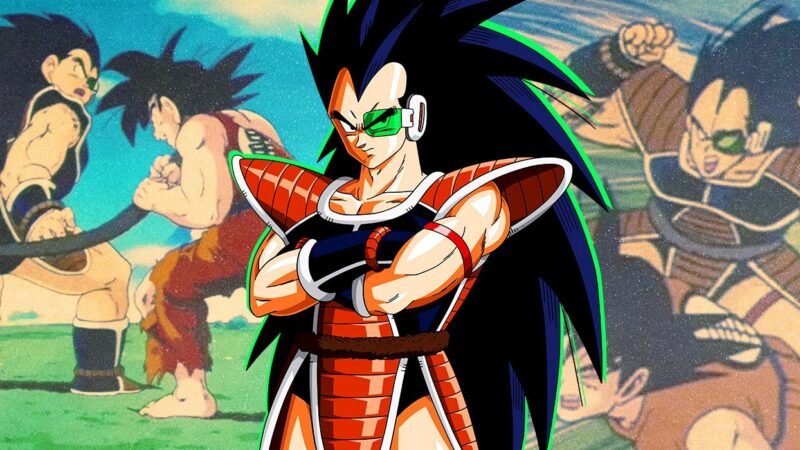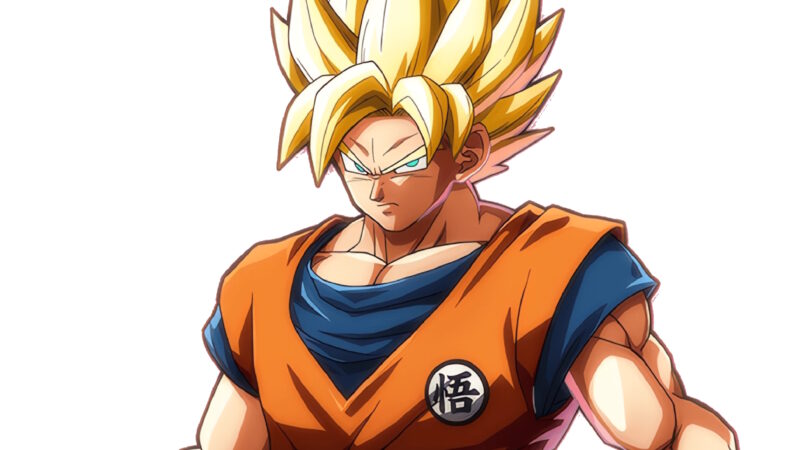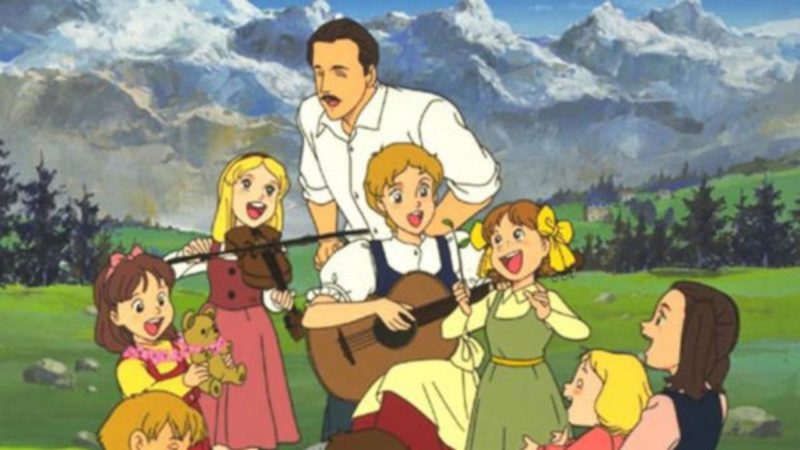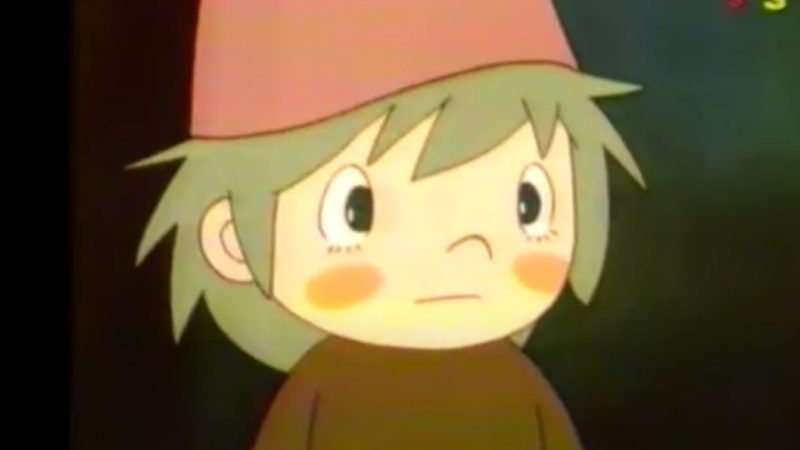Akira - the 1988 Japanese animated film
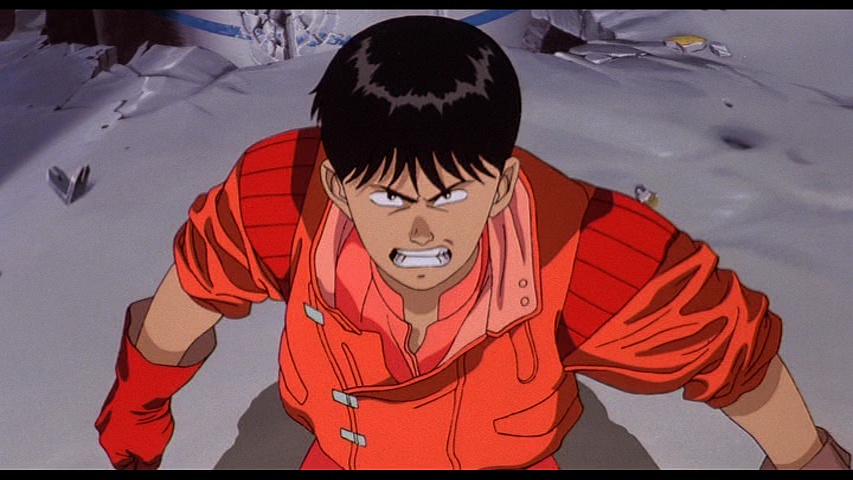
Akira (Japanese original: ア キ ラ) is a 1988 post-apocalyptic Japanese anime cyberpunk-genre animated film directed by Katsuhiro Otomo and produced by Ryōhei Suzuki and Shunzō Katō. The film is based on the manga comic of the same name written by Otomo in 1982 and adapted by Izo Hashimoto for the film.
Set in a dystopian future of 2019, Akira tells the story of Shōtarō Kaneda, the leader of a motorcycle gang whose childhood friend, Tetsuo Shima, acquires incredible telekinetic skills after a motorcycle accident. Tetsuo Shima with his powers, threatens an entire military complex between chaos and rebellion, in the intricate futuristic metropolis of Neo-Tokyo. Although most of the character designs and settings have been adapted from the manga, the storyline differs greatly and does not include much of the latter half of the manga. The soundtrack, which draws heavily on traditional Indonesian gamelan and Japanese noh music, was composed by Shōji Yamashiro and performed by Geinoh Yamashirogumi.
Akira is premiered in Japan on July 16, 1988 by Toho. It was broadcast the following year in the United States by the pioneer of animation distributor Streamline Pictures. He garnered an international cult following after various theatrical and VHS releases, eventually earning over $ 80 million worldwide in home video sales. It is widely regarded by critics as one of the greatest animated and science fiction films of all time ever made, as well as a landmark in Japanese animation. It is also a pivotal film in the cyberpunk genre and specifically the Japanese cyberpunk subgenre, as well as adult animated films. The film had a significant impact on popular culture around the world, paving the way for the growth of Japanese anime and popular culture in the Western world, as well as influencing numerous works of animation, comics, movies, music, television and video games.
Akira's story
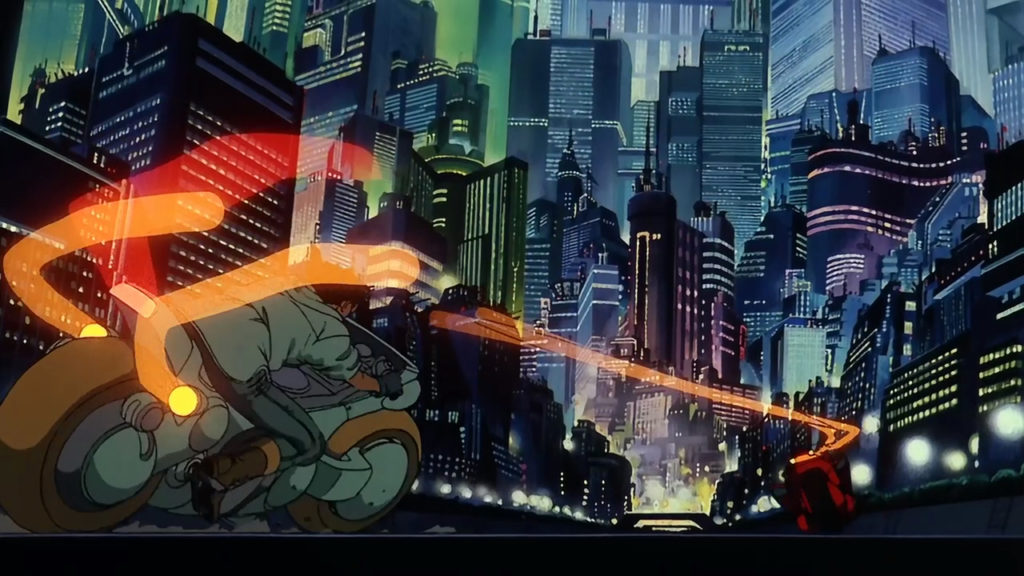
On July 16, 1988, a third world war destroyed the Japanese city of Tokyo. The complete rebuilding took place in 2019. Now known as Neo-Tokyo, the metropolis is plagued by corruption, anti-government protests, terrorism and gang violence and is on the verge of collapse. During a massive protest, the fiery Shōtarō Kaneda leads his gang of bikers against Clown's rival gang. Kaneda's best friend, Tetsuo Shima, accidentally crashes his motorcycle on Takashi, an esper (person with extrasensory perception), who has escaped from a government laboratory with the help of a resistance organization. The incident awakens strange psychic powers in Tetsuo, drawing the attention of a secret government project led by Colonel Shikishima's Japanese self-defense forces. Assisted by Esper Masaru, Shikishima recaptures Takashi, takes Tetsuo with him, and arrests Kaneda and his gang. While being questioned by the police, Kaneda meets Kei, an activist belonging to the resistance movement, and tricks the authorities into releasing her and her gang.
Shikishima and his head of research, Dr. Ōnishi, discover that Tetsuo possesses powerful psychic abilities similar to Akira, the esper responsible for the destruction of Tokyo. Takashi's fellow esper, Kiyoko, warns Shikishima of the impending destruction of Neo-Tokyo. However, the Neo-Tokyo parliament dismisses Shikishima's concerns, leading him to consider killing Tetsuo, to prevent another cataclysm.
Meanwhile, Tetsuo escapes the hospital, steals Kaneda's motorcycle, and prepares to flee Neo-Tokyo with his girlfriend, Kaori. The Clowns ambush them, but after a harsh beating, they are saved by Kaneda's gang. During the surgery, however, Tetsuo begins to suffer from severe headaches and hallucinations, and is taken back to the hospital. Kaneda joins Kei's resistance cell, after hearing their plan to save Tetsuo and the other espers.
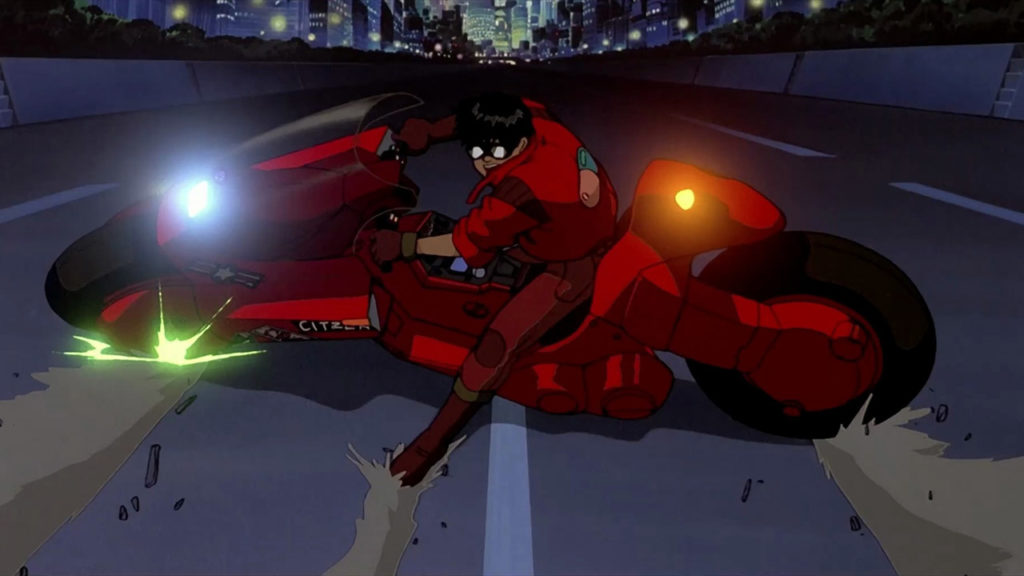


At the hospital, the experts confront Tetsuo, who aggressively fights with his psychokinetic powers and escapes. These powers are starting to make him self-centered and unstable. Kaneda, Kei and the resistance group infiltrate the hospital and are dragged by Colonel Shikishima in an attempt by the experts to stop Tetsuo. He overtakes them all and escapes from the hospital after learning from Kiyoko that he can get help from Akira, who is in a chronic warehouse under the construction site of the Olympic Stadium.
Kei and Kaneda escape military custody because of Kiyoko, who hopes to prevent Tetsuo from using Kei as a medium. Colonel Shikishima organizes a coup against the Neo-Tokyo government and orders all his military forces to destroy Tetsuo. Tetsuo returns to his gang's former haunt, Harukiya Bar, to procure drugs to control his powers. He kills the bartender and in the meantime destroys the bar. When his former friends Yamagata and Kai arrive and confront him, he slaughters Yamagata in cold blood in front of Kai; Kaneda is informed by Kai of what has happened and vows to avenge his friend. Tetsuo goes wild through Neo-Tokyo, arriving at Akira's cryogen storage thermos under the stadium. Kiyoko has Kei fight against Tetsuo, but he easily defeats her and exhumes Akira's remains. Using a laser rifle, Kaneda fights Tetsuo in a duel and Colonel Shikishima shoots him a space weapon, but they both fail to stop him.
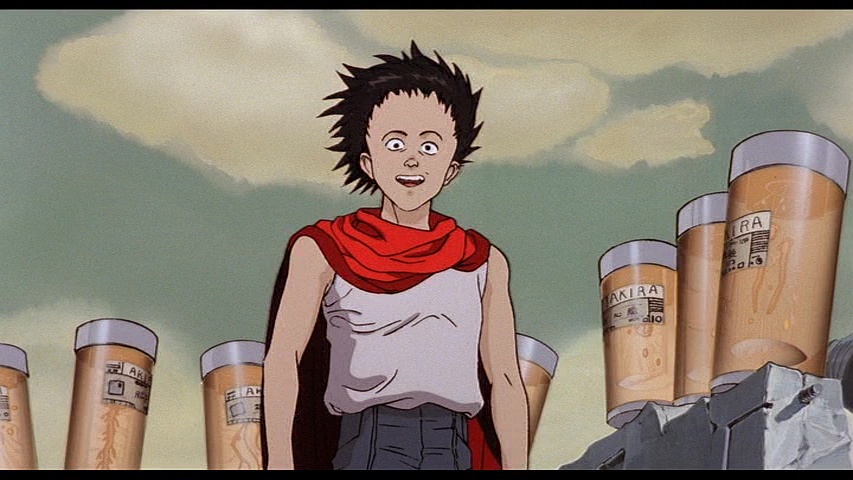


Shikishima and Kaori approach the stadium to find Tetsuo in a state of great suffering; Shikishima offers to take Tetsuo back to the hospital, heal his injuries and help him control his abilities, while Kaori attempts to restrain Tetsuo. However, Kaneda arrives and duels with Tetsuo again. Unable to control his powers, Tetsuo transforms into a gigantic mass, consuming all matter, engulfing Kaneda and killing Kaori. As the mass grows, the espers awaken Akira to stop her. After reuniting with his friends, Akira creates another singularity that draws Tetsuo and Kaneda to another dimension. The espers teleport Shikishima to a safe distance as the singularity destroys Neo-Tokyo as in the previous Tokyo destruction, and agree to save Kaneda, knowing that as a result they will not be able to return to this dimension.



In the singularity, Kaneda experiences the childhood of Tetsuo and the espers, including Tetsuo's addiction to Kaneda during their childhood, and how the children were trained and modified before the destruction of Tokyo. The espers bring Kaneda back to his world, informing him that Akira will take Tetsuo to safety and that Kei is developing psychic powers.
The singularity disappears and the water floods the city. Ōnishi is crushed to death when the laboratory collapses on him. Kaneda discovers that Kei and Kai have survived and they head for the ruins while Shikishima watches the sunrise. Finally, Tetsuo presents himself to another unspecified level of existence.
The production of the film
While working on the comic Akira , Katsuhiro Otomo had no intention of adapting his manga to other media, however he became intrigued when he was offered an offer to develop his work for an animated film. He accepted an anime film adaptation of the series, on the grounds that he retained creative control of the project - this insistence was based on his experiences working on Harmagedon . The Akira Committee was the name given to a partnership of several major Japanese entertainment companies, brought together to produce the film. The assembly of the group was made necessary by the unconventional budget of about 1.100.000.000 yen, destined to reach the desired epic standard equal to Otomo's manga story of over 2.000 pages.
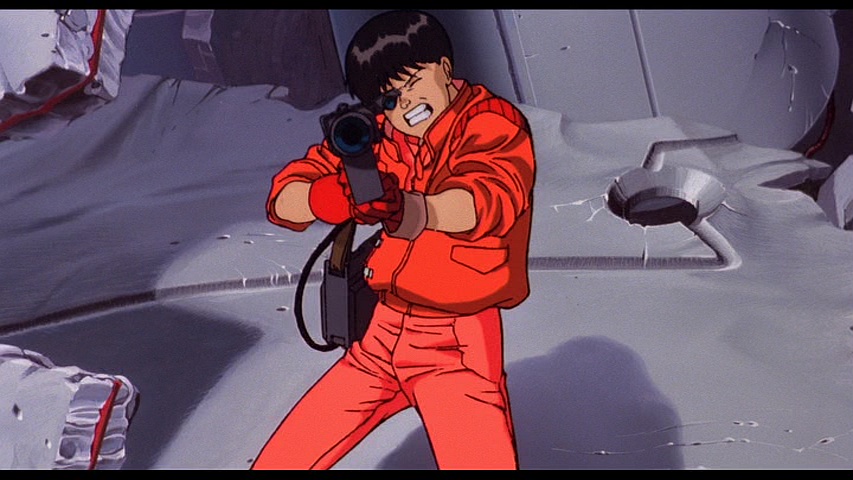


Akira had pre-scored dialogue (where dialogue is recorded before the film begins production and the lip movements of the characters are animated to match it; a first for an anime production and extremely unusual even today for an anime, although the voice actors do are exhibited with the help of animatics ), and super smooth motion as achieved in the film's over 160.000 cels of animation. Computer-generated images (created by High-Tech Lab. Japan Inc. and the cooperative companies for computer graphics, Sumisho Electronic Systems, Inc. and Wavefront Technologies) were also used in the film, mainly to animate the pattern indicator used. by Dr. Ōnishi, but was also used to trace the paths of falling objects, model parallax effects on backgrounds, and modify lighting and lens reflections. Unlike its live-action predecessors, Akira he also had the budget to show a fully realized futuristic Tokyo.
The film's production budget was 700 million yen ($ 5,5 million). It was the most expensive anime film to date, breaking the previous production record Laputa: Castle in the sky of 1986 by Hayao Miyazaki and Studio Ghibli which had cost 500 million yen before that Akira itself was overcome. a year later from the production of Miyazaki and Ghibli Kiki's Delivery Service (1989) which cost 800 million yen.
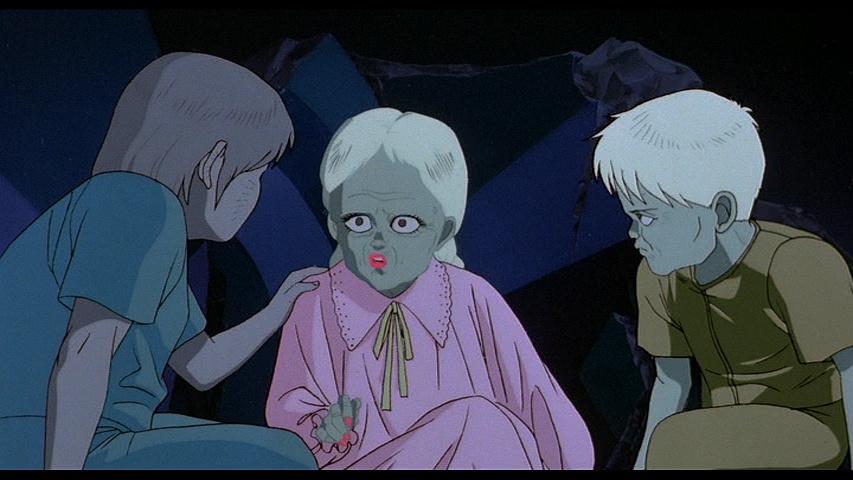


The trailer for Akira is was released in 1987. Major production of the film was completed in 1987, with sound recording and mixing performed in early 1988. It was released in 1988, two years before the manga officially ended in 1990. It is claimed Otomo filled 2.000 pages of notebooks, containing various ideas and character designs for the film, but the final storyboard consisted of 738 reduced pages. He had great difficulty completing the manga; Otomo said the inspiration for his conclusion came from a conversation he had with Alejandro Jodorowsky in 1990. He later recalled that the project for the film had to start with writing an ending that would bring a proper closure to the main characters, plots and themes without being extraordinarily long, so that he could know in reverse order which elements of the manga would have been cut. the anime and then adequately solves the various elements of the manga in a streamlined two-hour story.
A key animator who worked on Akira is was the former animator of Shin Ei Yoshiji Kigami. He animated several full scenes ad Akira , like the action scene in the sewers. He later joined Kyoto Animation and died in the 2019 Kyoto Animation arson attack at the age of 61.
Akira's trailer
How much did the film Akira earn
The film had a production budget of ¥ 700 million ($ 5.5 million), making it the second most expensive anime film until 1988 at the time (until it was surpassed a year later by Kiki home deliveries ).
Akira was released by Toho on July 16, 1988. At the Japanese box office, it was the sixth highest-grossing Japanese film of the year, earning distribution income (distributor rents) of ¥ 750 million in 1988. This made it quite a success at the Japanese box office. In 2000, the film earned Japanese distribution rental income of 800 million yen, equivalent to an estimated gross income of around 2 billion yen ($ 19 million). The film remastered in 4K received a limited Japanese IMAX version, for a gross of ¥ 30,157 million ($ 282.000) in May 2020, and will receive a large version in June 2020 after a delay due to the COVID-19 pandemic.
Fledgling North American distribution company Streamline Pictures soon acquired an existing English language version created by Electric Media Inc. for Kodansha, which saw limited North American theatrical release on December 25, 1989. Streamline became the film's distributor, with Carl Macek guiding the distribution. At the time of its initial limited release in the United States, Akira has grossed about $ 1 million in the United States alone. A limited edition reissue in 2001 grossed $ 114.009 in the United States.
In the UK, Akira is was released theatrically by Island Visual Arts on January 25, 1991 and was re-released on July 13, 2013 to celebrate the film's 25th anniversary and again on September 21, 2016. In Australia, Akira is was released in theaters by Ronin Films. [39] In Canada, the Streamline dub was published by Lionsgate (at the time known as C / FP Distribution), who would later become the owner of Manga Entertainment through their media operations unit Starz Distribution , in 1990. In 2001, Pioneer released a new one Dubbing English produced by animation and ZRO Limit Productions and premiered in select theaters from March to December 2001.
European film reissues between 1996 and 2018 sold 56.995 tickets. The limited film reissues in 2017 also sold 10.574 tickets in South Korea and grossed $ 4.554 in New Zealand. Including theatrical re-releases, the film grossed a total of $ 49 million at the worldwide box office in 2016.
In 2020, Manga Entertainment announced that it would release Akira in 4K and IMAX in the UK.
The judgment of the critics
In the review aggregator, Rotten Tomatoes, the film has an approval rating of 90% based on 48 reviews, with an average rating of 7,62 / 10. The site's critical consensus reads: " Akira she is extraordinarily gory and violent, but her phenomenal animation and pure kinetic energy have helped set the standard for modern anime. "
Anime News Network's Bamboo Dong praises the Limited Edition DVD for its "superbly translated" English subtitles and commendable English dubbing, which "is very close to English translation, and where voice actors deliver their lines with emotion". THEM Anime's Raphael See applauds the film's “stunning special effects and clean, crisp animations”. Chris Beveridge comments on Japanese audio, which “brings the stage forward nicely into play when required. The dialogue is well positioned, with several key moments of direction used perfectly ”. Janet Maslin of the New York Times commends Otomo's artwork, stating that “Neo-Tokyo's drawings at night are so detailed that all the individual windows of huge skyscrapers appear distinct. And these night scenes shine with soft and vibrant colors ”. Richard Harrison of the The Washington Post comments on the pace of the film, stating that the author "condensed the narrative expansion of the comics to provide coherence, although there is some incompleteness of" Back to the future Part II "in history. It doesn't matter, since the film moves with such kinetic energy that you'll be watching it for your entire life. "
Variety praises the "imaginative and detailed design of tomorrow's film for the booming Dolby effects on the soundtrack" but criticizes the "slight rigidity in the design of human movement". Kim Newman of Empire praises the film's "sparkling animated images, with no - not one - computer-assisted shot in sight." Chicago Tribune praises "Otomo's excellent animation-specific ideas: Means of leaving small traces of color as they roar through the night, and there are a number of dream sequences that make pleasant use of the scale medium's ability to confound and distort the perspective ". states that the anime "remains fresh and exciting, easily coping with the products of two decades of enormous technical advancement." Meanwhile, in February 2004, Dan Persons of Cinefantastique has listed the film as one of the "10 essential animations", simply referring to the film as "the film that changed everything".
The masterpiece film that inspired other masterpieces
Akira is now widely regarded as one of the greatest animated films of all time and has resulted in a surge in the popularity of anime films around the world, outside of Japan. He is still admired for his outstanding images. In the 4 Channel 2005 survey of the 100 best animations of all time featuring film and television, Akira is arrived at number 16. In the magazine list Empire of the 500 greatest films of all time, Akira it is at number 440. It has shown up once again Empire 'list of the 100 best films in world cinema, coming in at number 51. IGN also named it 14th on its list of the 25 best animated films of all time. The anime Akira and also entered in the magazine's list of 5 best anime DVDs TEAM . The film got number 16 on Time-out 'top 50 on the list of animated films and number 5 on the Total Film of the Top 50 list of animated films. The film was ranked # XNUMX by the magazine Wizard's Anime in the "Top 50 Anime Released in North America" list in 2001. It was ranked fourth on the "10 Best Animated Movies by The Hollywood Reporter ". for Adults “in 2016. Selected Roger Ebert del Chicago Sun-Times as "Video Pick of the Week" in 1992 in Siskel & Ebert and the Movies . For his larger release in 2001, he gave the movie "Thumbs Up".
Akira it was also considered one of the greatest science fiction films of all time. It was ranked number 22 on the The Guardian on the list of Best Sci-Fi and Fantasy Movies, including Film50's Top 4 Sci-Fi Movies list, and ranked number 27 on the Complex magazine's list of the 50 best science fiction movies. Phelim O'Neill del The Guardian draw a parallel on how Akira influence the science fiction genre like Blade Runner and the Stanley Kubrick film 2001: Odissea nello spazio . Akira it is considered a reference film in the genre cyberpunk , especially the subgenus Japanese cyberpunk . The British Film Institute describes Akira as a milestone of the cyberpunk genre, along with Blade Runner e neuromancer . Rob Garratt of the South China Morning Post defines Akira one of the "most influential science fiction visions ever made" on film, comparable to the influence of Blade Runner . Akira It is also credited as a breakthrough in adult animation, proving to the world audience that animated films are not just for children.
Akira is considered by many critics to be a landmark anime film, one that has influenced much of the art in the anime world, which has followed its release with many illustrators in the manga industry citing the film as a major influence. The author of the manga Masashi Kishimoto , for example, remembers being fascinated by the way the poster was made and wanted to mimic the style of series creator Katsuhiro Otomo. The film had a significant impact on pop culture around the world. The film paved the way for the rise of anime popularity outside of Japan and Japanese popular culture in the Western world. Akira is considered a precursor to the second wave of fandom anime, which began in the early 90s and has since gained a huge cult following. He is credited with influencing famous anime of the likes of Pokémon , Dragon Ball e Naruto which in turn have become world cultural phenomena. Second The Guardian , "The cult anime of 1988 taught Western filmmakers new ideas in storytelling and helped cartoons grow."
Akira he has influenced numerous works in animation, comics, films, music, television and video games. It has inspired a wave of Japanese cyberpunk works, including manga and anime series like Ghost in the Shell , Battle Angel Alita , Cowboy Bebop e Serial Experiments Lain , live-action Japanese movies like Tetsuo: The Iron Man , and video games like Hideo Kojima's Snatcher e Metal Gear Solid , is Final Fantasy VII . Outside of Japan, Akira has been cited as a major influence on Hollywood movies such as Matrix , Dark City , Kill Bill , TV shows like Batman Beyond, Stranger Things and video games like Switchblade . John Gaeta quoted Akira as an artistic inspiration for the bullet time effect in Matrix . Akira he was also credited with influencing Star Wars , including the prequel film trilogy and the film and television series of Clone Wars . Todd McFarlane quoted Akira as an influence on the animated television series Spawn .
Awards
In 1992, Akira has won the Silver Scream Award at the Fantastic Film Festival in Amsterdam.
kira is was one of four nominations for the 2007 American Anime Awards “Best Anime Feature”, but lost to Final Fantasy VII: Advent Children .
The soundtrack
Akira: Original Soundtrack ( Symphonic Suite Akira ) was recorded by Geinoh Yamashirogumi (芸 能 山城 組). The music was composed and directed by the musical director Shōji Yamashiro (pseudonym of Tsutomu Ōhashi), and performed by the collective Geinoh Yamashirogumi. The soundtrack draws heavily on traditional Indonesian gamelan music, as well as elements of Japanese noh music.
It features music that has also been re-recorded for release. "Kaneda", "Battle Against Clown" and "Exodus From the Underground Fortress" are really part of the same song cycle - elements of "Battle Against Clown" can be heard during the opening sequence of the bike, for example. The soundtrack is usually sequenced in the same order that the music is in the film. The North American version featured extensive production notes by David Keith Riddick and Robert Napton.
Akira: The Original Japanese Soundtrack ; an alternate soundtrack was also released. This version included the music as it appeared in the film with dialogue and sound effects albeit sorted out of sequence.
The soundtrack spawned a remix album electronic of Bwana, called Capsule Pride
Akira's live-action film
Since 2002, Warner Bros. has acquired the rights to create a live-action remake of Akira as a seven-figure contract. The live-action remake went through several failed attempts to produce it, with at least five different directors and ten different writers known to be associated with it. In 2017, director Taika Waititi was named the film's director for the live-action adaptation. Warner Bros. had scheduled the film to release on May 21, 2021, and filming was due to begin in California in July 2019.

